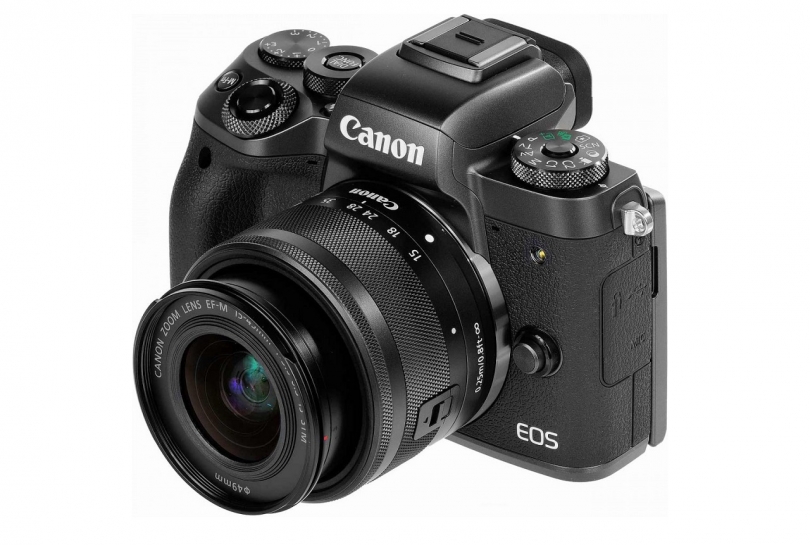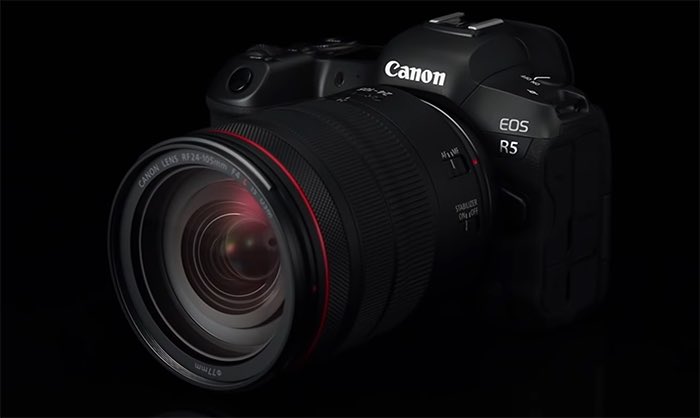
Introduction Canon kickstarted the idea of the stills/video hybrid ILC with the introduction of the EOS 5D Mark II in 2008. Since then it appears to have focused most of its video efforts on its Cinema EOS line of professional video cameras.
However, as part of its drip-feed of EOS R5 specs, Canon has spelled out a lot more about its video capabilities. And, from what's been said, it looks like the biggest leap forward in video for Canon's main EOS line since that launch 12 years ago.
We already knew that the EOS R5 was going to be able to shoot at 12 fps with its mechanical shutter and 20 in e-shutter mode and that it was going to shoot 8K, but the more detailed video specs are worth digesting. . .
8K video capture
The most eye-catching spec is one that Canon's previously announced. The EOS R5 will become the first consumer ILC to offer 8K video capture. That's a huge deal, in part because of what it tells us about the camera's processing power.
8K is usually taken to mean a resolution of 7680 x 4320 pixels, which is exactly four times the size of UHD 4K (also meaning it's the theoretical perfect capture resolution if you wish to correctly represent all the spatial frequencies that can be conveyed in a 4K image).
However, Canon has previous tended to prefer the wider 1. 90:1 DCI format to the 16:9 of UHD for its high end cameras. Canon also says that it's both the 8K and DCI 4K modes that use the full width of the sensor, which could imply the use of a 8192 x 4230 region. This would require a 44. 7MP sensor, rather than the ~40MP chip needed for 16:9 8K.
Even though 8K displays aren't exactly widespread, yet, there are plenty of reasons it can still be useful. Whether it's to provide greater compositional flexibility in the edit, to provide better quality 4K footage, or to future-proof your project, 8K capability will have its uses.
8K Raw
And, as if 8K video weren't impressive enough (as we say, it's at least four times the data demand that still causes many cameras to get hot under the collar dealing with), Canon says the EOS R5 will capture Raw video data.
Internal Raw video capture is scarce enough in the 4K realm, being almost the sole preserve of the EOS-1D X Mark III, with just a handful of cameras having to hand-off much of the heavy lifting to Atomos' external recorders. But Canon says the EOS R5 will handle 8K 30p in Raw: that's thirty 32MP images per second.
Given the 1D X III shoots 5. 5K Raw in 12-bit, we'd assume a similar setup here. Canon hasn't specified the data rates yet. The R5's 8K is a bit more than twice the number of pixels as the 1D X III's video, so we'd expect its 8K/30p to be anywhere from a bit above the 2600 Mbps that the 1D X III uses to store 5. 5K/60p to somewhere in the high 3000 Mbps range, if the compression ratio is closer to that of the 1D X III's 5. 5K/30p data rate.
Unlike the 1D X III, it'll be able to output its maximum rate while maintaining Dual Pixel AF.
10-bit C-Log
For those of us without cooled server farms and infinite storage, the EOS R5 will be able to shoot C-Log footage. Like the 1D X Mark III, this is output as 10-bit 4:2:2 H. 265 footage.
This is likely to be the Canon Log response that incorporates around 12 stops of dynamic range, giving a good degree of flexibility in when post-processing. LUTs for the Canon Log response are already widely available, for both SDR and HDR output, making it easy to incorporate the R5 into an existing workflow.
10-bit HDR PQ
Alternatively, the camera will output footage encoded using the PQ (perceptual quantizer) curve used in several of the most sophisticated HDR TV standards.
This provides a means of shooting footage directly for use on HDR displays. It's interesting to see Canon plump for the PQ response, rather than the simpler and SDR-compatible HLG system adopted by Panasonic, Fujifilm and Sony.
4K/120
As if the promise of 8K video weren't impressive enough, Canon says the EOS R5 will be able to shoot 4K footage from the full width of its sensor at up to 120p. While maintaining full Dual Pixel AF.
In an era when most of the handful of cameras that can shoot 4K/60 have to crop or sub-sample their sensors to do so, the idea of shooting 120p (119. 94) is a big step forward.
It's likely that both this and the 60p footage will be sub-sampled in some manner (if it could read and process that entire sensor region 120 times a second, it could presumably offer 8K/120, too!).
But played back as 24p, it can be used as 1/5th speed slow-mo, or 1/4th speed for 30p playback, which is a useful creative option in 4K workflows.
IBIS
Like the Nikon Z7, the EOS R5 will have in-body image stabilization.
Another key capability is the inclusion of in-body image stabilization. Canon has pretty well-established digital stabilization in many of its cameras but the EOS R5 will be the first instance of a Canon ILC with a moving sensor providing stabilization, too.
No details were given about whether the in-body system shares the stabilization duties when an IS lens is mounted (passing off pitch and yaw correction to the lens), or whether they both work in together, collaboratively.
This feature, combined with dual pixel AF and internal capture of even the highest-quality footage make the EOS R5 an effectively self-contained video package, able to turn its hand to a wide range of shooting styles and situations, including run-and-gun operation.
Potential limitations
There are a couple of details that are unknown, though. Many current cameras' maximum recording times are limited by the heat build-up, especially when shot at their highest resolution modes. The EOS R5 promises to juggle tremendous amounts of data, which is likely to generate a lot of heat, so it's not clear how long it will be able to run for, in its more technically impressive modes.
Also, although it's a two-slot camera, Canon has opted for one of these to be UHS-II. At present, the fastest SD card standards only guarantee 90 MB/s write speeds (no matter what the peak speeds quoted on the card say). At 'only' 720 Mbps, it's unlikely most of the R5's highest video rates can be dependably written to the SD card slot, potentially making it a single card slot camera from a high-end video perspective.
Unless data can be channelled to an external SSD across USB-C, the capacity of your CFexpress card might another bottleneck that limits the camera's shooting duration.
Battery life is the other potential limitation for a camera doing so much hard work. The mockups and computer renderings Canon has shown so far suggest there won't be room for a battery much bigger than in existing models, so that's another potential limit (though again, one that clever use of the USB socket might alleviate.
Summary
Canon's latest spec disclosure was solely focused on video but we'd expect it to be as much a camera for stills shooters as it is a video tool. We look forward to seeing what all this processing power will mean for AF and stills shooting, too.
Canon has let its main EOS line fall significantly behind its rivals (the EOS 5D IV's cropped video was off the pace when it was launched, so looked even more tired by the time it appeared in the EOS R, two years later), whereas the EOS R5 is not so much a case of catching up as establishing a significant lead.
Dale Baskin has looked into the implication of these video specs a bit more detail, but even if you're not interested in video, the EOS R5 is a camera worth watching.
. dpreview.com2020-4-21 15:00









